-
×
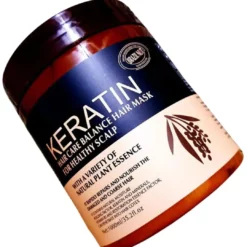 BRAZILIAN NUTRIENT HAIR MASK FOR SCALP BALANCE AND KERATIN CARE 1000ml
₨ 3,980
BRAZILIAN NUTRIENT HAIR MASK FOR SCALP BALANCE AND KERATIN CARE 1000ml
₨ 3,980 -
×
 SUNDIPPED HIGHLIGHTER PALLETE FROM ANASTASIA GLOW KIT
₨ 20,576
SUNDIPPED HIGHLIGHTER PALLETE FROM ANASTASIA GLOW KIT
₨ 20,576 -
×
 Serum C Vitamin - Seravio SERUMS C20 Brightening & Anti-Aging Solution (30ml)
₨ 2,517
Serum C Vitamin - Seravio SERUMS C20 Brightening & Anti-Aging Solution (30ml)
₨ 2,517 -
×
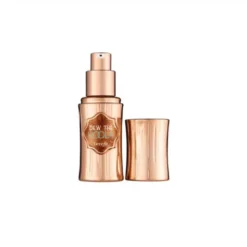 BENEFIT DEW HOOLA SOFT MATTE LIQUID FACE BRONZER - 5.0ML
₨ 6,373
BENEFIT DEW HOOLA SOFT MATTE LIQUID FACE BRONZER - 5.0ML
₨ 6,373 -
×
 GLOW & GLEE YUMM 10ml LIP & CHEEK SERUM TINT
₨ 1,995
GLOW & GLEE YUMM 10ml LIP & CHEEK SERUM TINT
₨ 1,995 -
×
 BIONNEX EYE CONTOUR CREAM 15ml
₨ 4,950
BIONNEX EYE CONTOUR CREAM 15ml
₨ 4,950 -
×
 Purest Solutions Tranexamic Acid Serum – 30ml
₨ 4,600
Purest Solutions Tranexamic Acid Serum – 30ml
₨ 4,600 -
×
 SEPHORA ORCHID LUSTER MATTE LIPSTICK
₨ 5,590
SEPHORA ORCHID LUSTER MATTE LIPSTICK
₨ 5,590 -
×
 Follitin Hair Fall Control Shampoo with Collagen and Biotin, Sodium-Free - 100ml
₨ 1,700
Follitin Hair Fall Control Shampoo with Collagen and Biotin, Sodium-Free - 100ml
₨ 1,700 -
×
 The Science of Microneedling with PRP for Scalp Health
₨ 18,000
The Science of Microneedling with PRP for Scalp Health
₨ 18,000 -
×
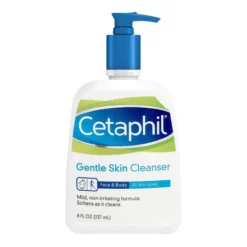 CETAPHIL GENTLE SKIN CLEANSER: SUITABLE FOR FACE & BODY ALL SKIN TYPES 500ML
₨ 6,495
CETAPHIL GENTLE SKIN CLEANSER: SUITABLE FOR FACE & BODY ALL SKIN TYPES 500ML
₨ 6,495 -
×
 LOREAL ELSEVE PRECIOUS FLORAL OIL ELIXIR 100ml
₨ 3,295
LOREAL ELSEVE PRECIOUS FLORAL OIL ELIXIR 100ml
₨ 3,295 -
×
 PHARMACERIS H STIMULINUM Hair Conditioner (150ml) - Imported from Poland
₨ 16,875
PHARMACERIS H STIMULINUM Hair Conditioner (150ml) - Imported from Poland
₨ 16,875 -
×
 BIODIX HAIR, SKIN, NAILS SUPPLEMENTS 30 TABLETS
₨ 1,500
BIODIX HAIR, SKIN, NAILS SUPPLEMENTS 30 TABLETS
₨ 1,500 -
×
 Sulfate Free Shampoo | Minevital Anti-Hair Loss Shampoo 300ml - Imported from Turkey
₨ 3,750
Sulfate Free Shampoo | Minevital Anti-Hair Loss Shampoo 300ml - Imported from Turkey
₨ 3,750 -
×
 VAGISAF Intimate Tightening Serum 15ml – Natural Feminine Care
₨ 1,500
VAGISAF Intimate Tightening Serum 15ml – Natural Feminine Care
₨ 1,500 -
×
 ACTA WHITE CLEANSER SKIN BRIGHTENING FACE WASH 50ml
₨ 2,100
ACTA WHITE CLEANSER SKIN BRIGHTENING FACE WASH 50ml
₨ 2,100 -
×
 Benefit Rockateur Highlighter in 5G Size
₨ 8,245
Benefit Rockateur Highlighter in 5G Size
₨ 8,245 -
×
 RAYAN Multi Vitamins for Hair, Skin, and Nails - 30 Tablets - derma.pk
₨ 3,600
RAYAN Multi Vitamins for Hair, Skin, and Nails - 30 Tablets - derma.pk
₨ 3,600 -
×
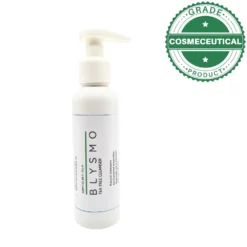 BLYSMO TEA TREE CLEANSER 100ml
₨ 1,700
BLYSMO TEA TREE CLEANSER 100ml
₨ 1,700 -
×
 HUDSON CLEANSER GENTLE CLEANSING FORMULA FOR ALL SKIN TYPES 150ml
₨ 2,500
HUDSON CLEANSER GENTLE CLEANSING FORMULA FOR ALL SKIN TYPES 150ml
₨ 2,500 -
×
 Glamorous Face Lemon Face Wash
₨ 469
Glamorous Face Lemon Face Wash
₨ 469 -
×
 CURIL SHAMPOO FOR ITCHY FLAKING SCALP 100ml
₨ 335
CURIL SHAMPOO FOR ITCHY FLAKING SCALP 100ml
₨ 335 -
×
 HAIRMAXX ADVANCE HAIR REGROWTH FOAM 50ml
₨ 1,750
HAIRMAXX ADVANCE HAIR REGROWTH FOAM 50ml
₨ 1,750 -
×
 BIOTIN SHAMPOO HEALTHY SMOOTH AND DANDRUFF FREE HAIR 100ml
₨ 820
BIOTIN SHAMPOO HEALTHY SMOOTH AND DANDRUFF FREE HAIR 100ml
₨ 820 -
×
 THE INKEY LIST ROSEHIP OIL 30ml
₨ 6,693
THE INKEY LIST ROSEHIP OIL 30ml
₨ 6,693 -
×
 TOO FACED BORN THIS WAY MULTI-USE COMPLEXION POWDER NUDE 10g
₨ 10,890
TOO FACED BORN THIS WAY MULTI-USE COMPLEXION POWDER NUDE 10g
₨ 10,890 -
×
 Scabfree Lotion - Powerful Treatment for Scabies and Lice
₨ 145
Scabfree Lotion - Powerful Treatment for Scabies and Lice
₨ 145 -
×
 Anti Fall Hair Shampoo: Follitin Sodium-Free Formula with Biotin
₨ 850
Anti Fall Hair Shampoo: Follitin Sodium-Free Formula with Biotin
₨ 850 -
×
 ROMANTIC COLOR CONTOUR PALETTE 6 COLOR
₨ 1,425
ROMANTIC COLOR CONTOUR PALETTE 6 COLOR
₨ 1,425 -
×
 SKIN AQUA CLEAR WHITE SPF 50+ PA+++ BROAD SPECTRUM SUNSCREEN FOR SKIN
₨ 2,055
SKIN AQUA CLEAR WHITE SPF 50+ PA+++ BROAD SPECTRUM SUNSCREEN FOR SKIN
₨ 2,055 -
×
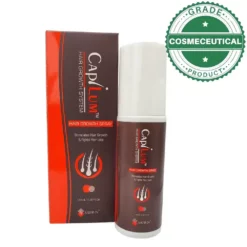 CAPILUM HAIR GROWTH SPRAY 100ml
₨ 3,000
CAPILUM HAIR GROWTH SPRAY 100ml
₨ 3,000 -
×
 NYX TOTAL CONTROL DROP FOUNDATION IN SHADE TCDF 08
₨ 3,075
NYX TOTAL CONTROL DROP FOUNDATION IN SHADE TCDF 08
₨ 3,075
You may be interested in…
-
Add
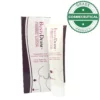 Breast Tightening Lotion - BustyDERM Firming Lotion 100ml -Toned & Youthful Skin
Rated 4.67 out of 5(6) ₨ 2,990
Breast Tightening Lotion - BustyDERM Firming Lotion 100ml -Toned & Youthful Skin
Rated 4.67 out of 5(6) ₨ 2,990 -
Add
 Aqua Color Line Matte Perfection Full Coverage Foundation Stick (Shade-45) - derma.pk
Rated 4.40 out of 5(10) ₨ 660
Aqua Color Line Matte Perfection Full Coverage Foundation Stick (Shade-45) - derma.pk
Rated 4.40 out of 5(10) ₨ 660 -
Add
 Cudrova Spazio Anti-Hair Fall Serum for All Hair Types (35ml - 7 Vials) - Made in Canada
Rated 4.50 out of 5(10) ₨ 6,077
Cudrova Spazio Anti-Hair Fall Serum for All Hair Types (35ml - 7 Vials) - Made in Canada
Rated 4.50 out of 5(10) ₨ 6,077 -
Add
 Cudrova Synergy Bond Repair & Hair Care Mask for All Hair Types (250g) - Made in Canada
Rated 4.70 out of 5(10) ₨ 6,195
Cudrova Synergy Bond Repair & Hair Care Mask for All Hair Types (250g) - Made in Canada
Rated 4.70 out of 5(10) ₨ 6,195 -
Add
 BEAUWELL Retinol Serum with 5% Hyaluronic Acid | Anti-Aging & Skin Rejuvenation
Rated 4.80 out of 5(10) ₨ 2,850
BEAUWELL Retinol Serum with 5% Hyaluronic Acid | Anti-Aging & Skin Rejuvenation
Rated 4.80 out of 5(10) ₨ 2,850







